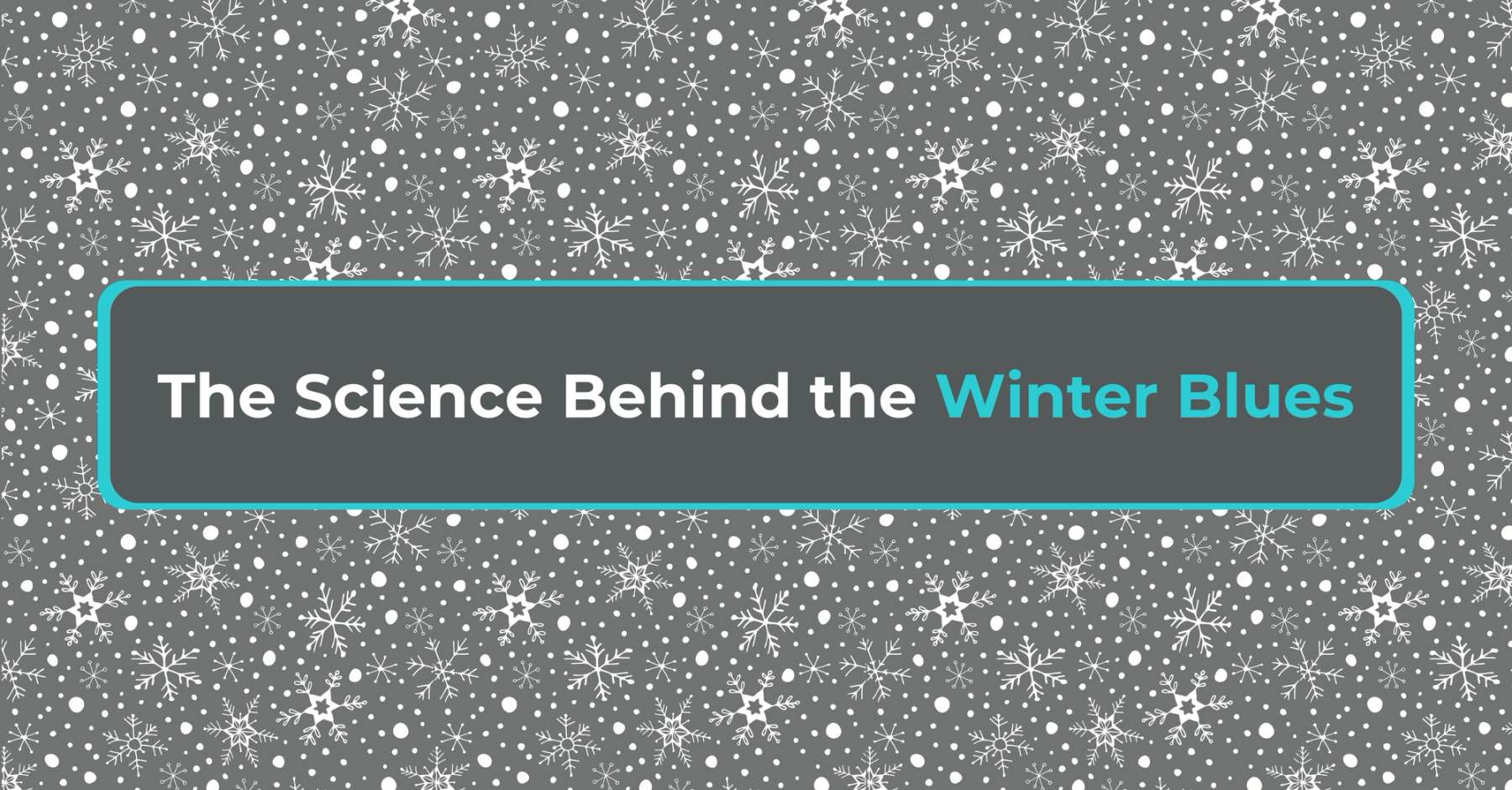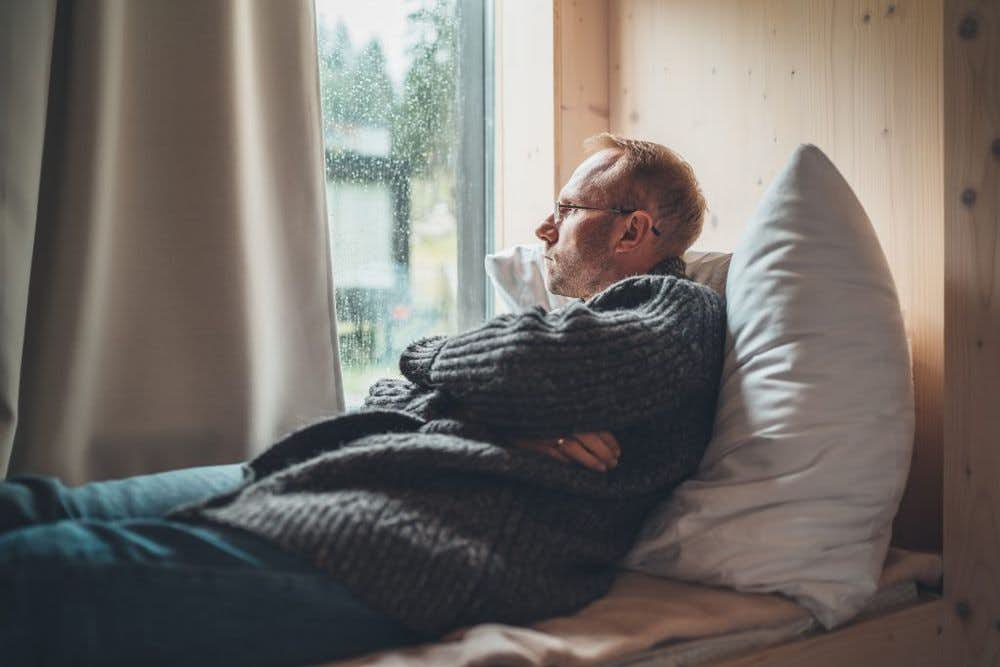'Tis the season of holiday gatherings, sipping on hot cocoa, taking visits to apple orchards, and trips to the ice rink. After enduring the sweltering heat of the summer, an autumnal breeze can feel quite refreshing.
However, with all of the joy that the Autumn and Winter seasons bring, they can also bring their own unique challenges. More commonly, in regions that experience all four seasons, some people may find that they get a little bit SAD. No, I do not mean that they are feeling a little blue, they are experiencing Seasonal Affective Disorder.
What is Seasonal Affective Disorder?
Seasonal Affective Disorder (SAD) is defined by the American Psychiatric Association (APA) as a type of depression that occurs only seasonally. While SAD can occur in any season, it most commonly occurs in the wintertime.
The APA reports that the most common months in which United States residents experience SAD are January and February, with symptoms lessening as Spring arrives. Though many of us may experience a lower mood in the colder months, SAD is more severe than winter blues. SAD can be diagnosed if someone meets the criteria for a depressive episode while also meeting specifiers for a seasonal pattern.
Diagnostic criteria for diagnosing an episode of major depression include:
A. Five or more of the following symptoms present during the same two-week time frame, almost daily. At least one symptom is either a depressed mood or loss of pleasure or interest.
- Depressed mood (for children and adolescents this may present as irritability)
- Decreased interest or pleasure in daily activities
- Significant weight gain or weight loss when not dieting
- Sleeping much less or much more than is typical for you
- Psychomotor retardation or agitation
- Increased fatigue
- Feeling worthless or experiencing unnecessary or increased guilt
- Experiencing challenges with concentration and decisiveness
- Continuous thoughts of death and/or suicidal ideation
B. These symptoms are not better explained by a general medical condition, other mood disorder, grief, or a substance-induced mood disorder.
C. These symptoms are not better explained by a psychotic disorder.
Seasonal pattern specifiers include:
- Regular time pattern between the onset of depressive episodes and a time of year.
- Remittance of depression symptoms occurring at a regular time pattern
- Two episodes of depression meeting A and B criteria in the past two years
- Seasonal episodes of depression are far more common than non-seasonal episodes in an individual’s lifetime.
One important note to take is that someone who has a diagnosis of major depression or another depression-related disorder may experience increased symptoms of depression in the wintertime that is not necessarily SAD. To better understand your own experience of seasonal mood changes, it is best to consult with your doctor and/or mental health provider.
What Causes SAD?
There are many possible contributing factors to SAD. Though there are no proven causes of SAD, there are several evidence-based theories that guide providers on how to treat SAD. Some theories include:
- Change in circadian rhythm cycles: With decreased exposure to the sun in the colder months, our bodies experience a shift in our circadian rhythms or the rhythms that help us sleep (our sleep, wake cycle). They not only impact our sleep but also regulate our mood and hormone levels. If there is a shift, mood regulation is challenging.
- Chemical imbalance in the brain: People who have SAD likely have lower levels of serotonin. Sunlight supports the production of serotonin so lower exposure to sunlight can lead to lower overall serotonin levels which can lead to depression.
- Low levels of Vitamin D: Vitamin D comes from various foods and the sun. Due to decreased sunlight exposure, most people have lower levels of Vitamin D and some people experience deficiency. This deficiency also relates to lower levels of serotonin and lower mood.
- Increased levels of Melatonin: Lower levels of sunlight have the opposite effect on melatonin as it does on serotonin meaning that more melatonin is produced in the body. Melatonin is essentially a sleep hormone so if more is produced in someone’s body, they will feel more fatigued.

How to Prevent Seasonal Affective Disorder Before it Begins
If you know that you are prone to SAD, there are ways to mitigate or prevent its arrival before it occurs. Utilize these tools starting in early autumn to minimize the impact of upcoming SAD:
- Maintain physical and nutritional routines. Eating a balanced, nutrient-dense diet and engaging in three to four thirty-minute sessions of exercise each week can support the production of serotonin in our bodies. There may be a desire to drink more caffeine and alcohol or to take more afternoon naps, but avoiding these pulls and engaging in a consistent routine can stave off the impacts of SAD.
- Engage in a gratitude practice. Research shows that those who engage in a consistent gratitude practice sleep more soundly, feel more joy, and feel more confident. Popular gratitude practices include journaling, meditating, and prayer.
- Plan opportunities to socialize. Now more than ever, it is easy to isolate and feel lonely. Humans are social beings and whether or not we are introverts or extroverts, we need human interaction. Try to plan at least one or two social experiences each week to meet your human need for connection.
- Prioritize time outside. Many of the negative impacts of SAD are connected to a lack of exposure to sunlight. Though the colder months do not offer many hours of sunlight, it is beneficial to take advantage of daylight hours when possible. One way to do this is to take a walk while on a lunch break. If this is not a possibility due to personal responsibilities or inclement weather, it may be worthwhile to invest in a sun lamp.
- Practice intentional self-care. Self-care is always important, but maintaining a self-care routine during the winter months is doubly so. In your planner or calendar, set aside intentional time to engage in mood-boosting self-care activities.

What to Do if You are Experiencing Seasonal Affective Disorder
Sometimes SAD can sneak upon us. You may have engaged in the various tips described above, but still, notice SAD symptoms. If you notice that you or a loved one is experiencing symptoms of SAD, here are a few other ways to manage your experience.
- Engage in light therapy. To engage in light therapy, first, purchase a sun lamp. If used for 30 minutes in the morning, you will likely experience improvement in symptoms within two to four days. There are some cases in which light therapy may not be helpful such as while taking certain antibiotics or while experiencing eye strain. If you have questions about the use of light therapy, speak to your physician.
- Seek Cognitive Behavioral Therapy (CBT). CBT is a type of therapy in which we learn how our thoughts impact our actions and vice versa. This type of therapy is regarded as having the best impact on SAD.
- Consider using prescribed medication. While behavioral and cognitive interventions can often improve SAD, sometimes more support from medication is also needed. If you believe that medication may be needed to manage your symptoms of SAD, consult with a psychiatric care provider.
- Go outside. As described above, going outside may be one of the most useful tools for managing SAD. If you notice you are experiencing SAD symptoms, plan time outdoors each day and find ways to increase natural light in your space.
Written By: Sarah Beerman, LCSW, CADC
Clarity Clinic
At Clarity Clinic, we have highly trained staff who specialize in therapy and psychiatry services. To learn more about how we can support your mental health, call Clarity Clinic at (312) 815-9660 or schedule an appointment today.
Schedule Now




